NewsBeat
ICC prosecutor calls for arrest of Taliban duo over ‘persecution’ of women | World News


The chief prosecutor of the International Criminal Court (ICC) has told Sky News he is seeking the arrest of two senior Taliban figures over the “systemic and deliberate” persecution of women in Afghanistan.
Karim Khan KC, speaking on Sky News’ The World with Yalda Hakim, said the pair bore “criminal responsibility” over the treatment of women and girls in the country.
It comes after the ICC announced earlier on Thursday it had filed two applications for warrants for the arrest of Taliban supreme leader Hibatullah Akhundzada and Afghanistan‘s chief justice Abdul Hakim Haqqani.
Mr Khan said: “The charges are gender persecution. It’s the systemic, we say, organised, deliberate, malicious suffocation of women, the targeting of girls and women, the denial of their rights to education, access to any public spaces, the inability to go to beauty salons, the inability to walk in the park, the inability really to have hope.
“And this isn’t something doctrinal. This has crossed every threshold and we say clearly is criminal. And that’s what we presented to the judges of the International Criminal Court to consider.”
The prosecutor said the evidence was “overwhelming” and that the charges amounted to the “crime against humanity of gender persecution”.
Human rights groups have heavily criticised Taliban leaders since they took back control of Afghanistan in 2021.
Under their leadership, women have faced a string of restrictions over their daily lives, including over work, education and freedom of movement.
Read more from Sky News:
Southport killer jailed
Red weather warning over Storm Eowyn
Sainsbury’s to cut 3,000 jobs
Mr Khan added: “This isn’t some acceptable choice from a menu of options that states can choose from. This isn’t about religious autonomy of doctrinal beliefs of Christianity or Islam or Buddhism or anything else for that matter.
“This has crossed every threshold in which women can either be seen or heard. Women can’t go to university. Girls don’t have an opportunity to go to school”.
There is no deadline for judges to rule on a request for a warrant, but a decision typically takes around four months.
NewsBeat
Children in B&Bs beyond legal limit as homelessness crisis pushes councils to ‘breaking point’ | Politics News

A record number of children are living in B&Bs beyond the legal limit as England’s homelessness crisis pushes councils to breaking point.
MPs said there is a “dire need” for housing reform, with the lack of affordable homes forcing cash-strapped local authorities to haemorrhage their funds on temporary accommodation.
The “crisis situation” means there is less money in the pot to focus on homelessness prevention, the cross-party Public Accounts Committee (PAC) said.
Councils are instead having to prioritise short-term solutions which can include putting families in bed and breakfasts – the fastest rising temporary accommodation type over the past decade, a Sky News analysis of government data found.
Temporary accommodation is meant to be a short-term solution for people who are homeless while they wait for more suitable and long-term housing options.
But the rising number of homeless households in England, driven by a shortage of social or otherwise affordable housing to move on to, means that increasingly this fix is anything but temporary.
A recent Sky News investigation found that children in some parts of England are spending as long as five-and-a-half years on average in temporary accommodation.
Length of stay has increased significantly in many areas since 2021, with particularly long stays in London and the South East.
B&B use was the fastest rising temporary accommodation type over the past decade, rising fourfold from 4,400 households in 2014 to a record high of 18,400 by 2024, according to government figures.
The data shows 6,000 of these households included children, of which two in three had been living there for longer than the 6-week legal limit.
All of this is cripplingly expensive for councils. B&Bs, meant to be reserved for emergencies only, were the largest single spending category in council homelessness budgets in 2024, at £723.9m.
This is more than triple the amount spent in 2014, which was £218m adjusted for inflation.
Overall, temporary accommodation costs to local authorities have risen from more than £1.6bn in 2022-23 to around £2.1bn in 2023-24, the PAC said.
‘Crisis situation’
The PAC is calling for a clear strategy and stronger support for local authorities to address what it called “a crisis situation”.
Despite there being an overarching homelessness strategy for each of the devolved nations, England does not have one.
Committee chairman Sir Geoffrey Clifton-Brown said this had left local authorities “attempting to save a sinking ship with a little more than a leaky bucket”.
Read More:
Mum-of-three left homeless after reporting threats to police
National scandal’ as number of children living in temporary accommodation reaches record high
MPs also urged the government to justify its Local Housing Allowance (LHA) rates, which calculate housing benefit for tenants renting from private landlords.
The committee said 45% of households in receipt of the benefit face a shortfall between what they receive from the government and what they are being asked to pay in rent, and the issue is “exacerbated by the lack of affordable housing”.
The government has pledged to build 1.5 million homes by the end of this parliament, but it has not set a target of how many of them will be classed as affordable.
Sir Geoffrey said: “My committee is deeply concerned by the number of people currently being housed in sub-standard, overpriced and at times, wholly inappropriate accommodation, sometimes a long way from their previous home.
“A lack of affordable housing, a focus on short-term solutions and no clear strategy to tackle this issue have left us with thousands of families in deeply troubling circumstances.”
He added: “Local authorities find themselves at breaking point as they haemorrhage funds to cover the rising costs of housing families in temporary accommodation.
“We are calling for an overarching strategy that addresses the need for better connectivity across government departments to tackle the root causes of this crisis.
“Without one, we fear this will remain an issue into which money is simply poured, without effectively tackling the blight of homelessness.”
NewsBeat
Historic jump in companies in critical financial distress

There’s been a record jump in the number of UK businesses in critical financial distress, according to insolvency specialists.
This comes at the same time as a drop in consumer confidence as more people have concerns over the UK’s financial prospects as well as their own.
In their latest report, insolvency experts at Begbies Traynor said a company can be considered in critical financial distress if they have an outstanding county court judgment of over £5,000 or face a winding-up petition.
Businesses in the most distress include those in hospitality, leisure, and retail.
While there’s often a jump at year-end of companies in critical financial distress, the report found a record increase of 50% from September to December 2024, taking the number of companies in this category to 46,583 businesses.
One factor was HMRC becoming more aggressive in recovering overdue taxes owed.
The number of UK businesses considered to be in significant financial distress also rose by 3.5% on the prior quarter to 654,765.
Ric Traynor, executive chairman of Begbies Traynor, said: “After a historic rise in critical financial distress in the last quarter of 2024, it’s clear that many distressed UK businesses are finding it almost impossible to navigate the challenges they face as we start 2025.”
“For many businesses which were already dealing with weak consumer confidence and higher borrowing costs, the increase in national insurance contributions and the national minimum wage, announced at the last Budget, could be the last straw.”
He said sectors like retail and hospitality could be impacted in particular because they typically “operate on razor-thin margins”.
“I fear 2025 could end up being a watershed moment where thousands of UK businesses ‘call time’ after struggling to survive for years,” he added.
A separate report showed a slight fall in confidence among consumers in their own finances and a much sharper one over the prospects for the wider economy.
The long-running survey from GfK showed people’s intentions to spend on big-ticket items fell while the number of people considering putting money aside in savings rose.
GfK said that was a negative for the economy as it was a sign that many people saw dark days ahead and were putting money aside for safety.
Neil Bellamy, consumer insights director at GfK, said: “New year is traditionally a time for change, but looking at these figures, consumers don’t think things are changing for the better.
“These figures underline that consumers are losing confidence in the UK’s economic prospects.”
NewsBeat
Attorney general to review ‘unduly lenient’ sentence of Southport child killer Axel Rudakubana | UK News

The 52-year prison sentence of Axel Rudakubana is to be reviewed following complaints it was “unduly lenient”.
Southport’s MP Patrick Hurley was among those calling for a longer term on Thursday after the 18-year-old was jailed for murdering Alice da Silva Aguiar, nine, Bebe King, six, and Elsie Dot Stancombe, seven, in July last year.
The Labour backbencher said: “In my view, the sentence passed is unduly lenient. The crimes he committed were horrific and natural justice demands he spends the rest of his life behind bars.
“I have therefore made a request to the attorney general to have the sentence reviewed urgently, with a view to making sure he is never released. My community deserves nothing less.”
The Attorney General’s Office later confirmed the case had been referred under the unduly lenient sentence (ULS) scheme, which requires just one request in order for punishments handed out in court to be reconsidered.
A spokesperson said: “There is a high threshold for a successful ULS reference. The sentence must be not just lenient but unduly so, for example if the sentencing judge made a gross error or imposed a sentence outside the range of sentences reasonably available in the circumstances of the offence.”
Attorney General Lord Hermer and Solicitor General Lucy Rigby now have 28 days to decide whether to refer the sentence to the Court of Appeal for further consideration.
Rudakubana was sentenced after earlier pleading guilty to the murders, along with the attempted murders of eight other children, who cannot be named for legal reasons, class instructor Leanne Lucas and businessman John Hayes.
He was also convicted of having a knife, which he had bought on Amazon, on the date of the killings, production of the deadly poison ricin, and possessing information likely to be useful to a person committing or preparing to commit an act of terrorism.
His 52-year minimum term is thought to be the longest imposed on a killer of his age. Once the minimum term is reached, he would be subjected to a Parole Board review before he could ever be considered for release.
Because he carried out the crimes just nine days short of his 18th birthday, it means by law he could not be sentenced to a whole life order, which would mean he would never be released from jail.
This tariff is usually only imposed on criminals aged 21 or over but can be considered for those aged 18 to 20 in exceptional circumstances.
Read more:
Police investigation continues
The 14 minutes of terror
Victim’s parents describe horror
Describing the minimum sentence as “substantial”, Mr Justice Goose, sentencing at Liverpool Crown Court on Thursday, said he would serve “almost the whole of his life in custody”.
He added: “I consider at this time that it is likely that he will never be released and that he will be in custody for all his life.”
The judge also said he “must accept” that the prosecution had made it clear the attack did not meet the legal definition of an act of terrorism because there was no evidence of attempting to advance a political, religious, racial or ideological cause.
A parent of one of the children who survived the attack, who cannot be named, told The Sun the crimes were so horrific the killer should “rot in jail” and the “law needs changing”.
Mr Hurley said he supported demands for a law change, as did Tory leader Kemi Badenoch, who said there was a “strong case” for amending the law to allow for whole life orders to be imposed on people aged under 18 in some cases.
Downing Street declined to comment when earlier asked about the proposal.
NewsBeat
Afghan refugees feel ‘betrayed’ by Trump order blocking move to US

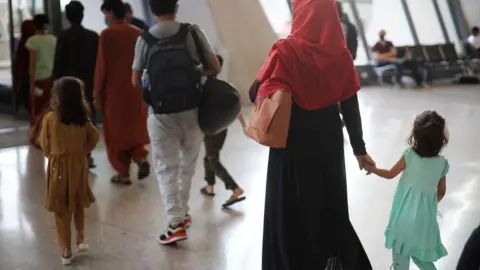 Getty Images
Getty Images“It’s like the United States doesn’t actually understand what I did for this country, it’s a betrayal,” Abdullah tells the BBC.
He fled Afghanistan with his parents amid the US withdrawal in August 2021 and is now a paratrooper for the US military. He worries he can’t help his sister and her husband escape too, because of President Donald Trump’s executive order suspending a resettlement programme.
The order cancels all flights and applications for Afghan refugees, without any exemption for families of active servicemembers.
Trump argues the decision addresses “record levels of migration” that threaten “the availability of resources for Americans”.
But Abdullah and several other Afghan refugees have told the BBC they feel the US has “turned its back” on them, despite years of working alongside American officials, troops and non-profit organisations in Afghanistan. We are not using their real names, as they worry doing so could jeopardise their cases or put their families at risk.
As soon as Abdullah heard about the order, he called his sister. “She was crying, she’s lost all hope,” he said. He believes his work has made her a target of the Taliban government which took power in 2021.
“The anxiety, it’s just unimaginable. She thinks we’ll never be able to see each other again,” he says.
During the war, Abdullah says he was an interpreter for US forces. When he left Afghanistan, his sister and her husband couldn’t get passports in time to board the flight.
Suhail Shaheen, a spokesperson for the Taliban government, told the BBC there is an amnesty for anyone who worked with international forces and all Afghans can “live in the country without any fear”. He claims these refugees are “economic migrants”.
But a UN report in 2023 cast doubt on assurances from the Taliban government. It found hundreds of former government officials and armed forces members were allegedly killed despite a general amnesty.
Abdullah’s sister and her husband had completed the medical exams and interviews required for resettlement in the US. The BBC has seen a document from the US Department of Defense endorsing their application.
Now Abdullah says Trump’s insistence that immigration is too high does not justify his separation from his family. He describes sleepless nights, and says the anxiety is affecting his work in his combat unit, serving the United States.
Babak, a former legal adviser to the Afghan Air Force, is still in hiding in Afghanistan.
“They’re not just breaking their promise to us – they’re breaking us,” he says.
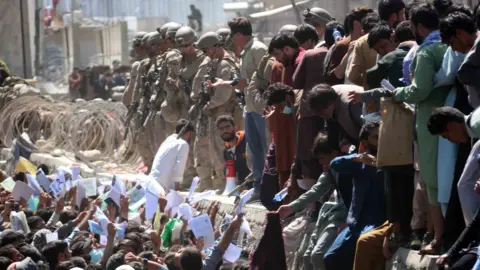 Getty Images
Getty ImagesThe BBC has seen letters from the United Nations confirming his role, as well as a letter endorsing his asylum claim by a Lt Colonel in the US Air Force. The endorsement adds that he provided advice on strikes targeting militants linked to both the Taliban and the Islamic State group.
Babak can’t understand the president’s decision, given that he worked alongside US troops. “We risked our lives because of those missions. Now we’re in grave danger,” he says.
He has been moving his wife and young son from location to location, desperately trying to stay hidden. He claims his brother was tortured for his whereabouts. The BBC cannot verify this part of his story, given the nature of his claims.
Babak is appealing to Trump and his National Security Adviser Mike Waltz to change their minds.
“Mike Waltz, you served in Afghanistan. Please encourage the president,” he tells us.
Before saying goodbye, he adds: “The one ray of light we’ve been holding onto has been extinguished.”
Ahmad managed to fly out to the US amid the chaos of the withdrawal but is now separated from his family. He felt he had no choice but to leave his father, mother and teenage siblings behind.
If he and his father had not worked with the US, he says, his family would not be targets of the Taliban government. “I can’t sleep knowing I’m one of the reasons they’re in this situation,” he adds.
Before the Taliban takeover, Ahmad worked for a non-profit called Open Government Partnership (OGP), co-founded by the US 13 years ago and headquartered in Washington. He says the work he’s proudest of is establishing a special court to address abuses against women.
But he claims his work at OGP and his advocacy for women made him a target and he was shot by Taliban fighters in 2021 before the Taliban took over the country.
The BBC has seen a letter from a hospital in Pennsylvania assessing “evidence of injury from bullet and bullet fragments” which they say is “consistent with his account of what happened to him in Kabul”.
 Getty Images
Getty ImagesMaking matters worse, he says his family is also in danger because his father was a colonel with the Afghan army and assisted the CIA. The BBC has seen a certificate, provided by the Afghan National Security Forces, thanking his father for his service.
Ahmad says the Taliban government has harassed his parents, brothers and sisters, so they fled to Pakistan. The BBC has seen photos showing Ahmad’s father and brother being treated in a hospital for injuries he claims were inflicted by people from the Taliban government.
His family had completed several steps of the resettlement programme. He says he even provided evidence that he has enough funds to support his family once they arrive in the US, without any government help.
Now Ahmad says the situation is critical. His family are in Pakistan on visas that will expire within months. He has contacted the IOM and has been told to “be patient”.
The head of #AfghanEvac, a non-profit group helping eligible Afghan refugees resettle, said he estimated 10,000-15,000 people were in the late stages of their applications.
Mina, who is pregnant, has been waiting for a flight out of Islamabad for six months. She worries her terror will threaten her unborn child. “If I lose the baby, I’ll kill myself,” she told the BBC.
She says she used to protest for women’s rights, even after the Taliban government took control of Afghanistan. She claims she was arrested in 2023 and detained overnight.
“Even then I didn’t want to leave Afghanistan. I went into hiding after my release, but they called me and said next time, they’d kill me,” she says.
Mina worries the Pakistani government will send her back to Afghanistan. That’s partly because Pakistan will not grant Afghan refugees asylum indefinitely.
The country has taken in hundreds of thousands of refugees from its neighbour, over decades of instability in the region. According to the UN refugee agency, the country hosts three million Afghan nationals, about 1.4 million of whom are documented.
As cross-border tensions with the Taliban government have flared, there has been growing concern over the fate of Afghans in Pakistan, with reports of alleged intimidation and detentions. The UN special rapporteur has said he’s concerned and Afghans in the region deserve better treatment.
Pakistan’s government says it is expelling foreign nationals who are in the country illegally back to Afghanistan and confirmed search raids were conducted in January.
According to the IOM, more than 795,000 Afghans have been expelled from Pakistan since last September.
The Afghan refugees we’ve spoken to feel caught between a homeland where their lives are in danger, and a host country whose patience is running out.
They had been pinning their hopes on the US – but what seemed a safe harbour has been abruptly blocked off by the new president until further notice.
NewsBeat
The Brutalist honours my ancestral struggles, says Adrien Brody

Entertainment Correspondent
 Lol Crawley/Universal Pictures
Lol Crawley/Universal PicturesThe Brutalist tells the story of Hungarian immigrant and holocaust survivor László Tóth, who is trying to rebuild his life in post-war America through his work as an architect.
Oscar winner Adrien Brody delved deep into his own family history for his portrayal of the character, reflecting on his mother and grandparents’ experiences in fleeing their native Hungary, which after World War Two was becoming a satellite state of the Soviet Union.
“The wonderful thing is, it’s an opportunity for me to honour my ancestral struggles – my mother and my grandparents’ hardships and loss in fleeing Hungary in the ’50s and emigrating to the United States.
“[It’s] very moving to be reminded of the details and hardships that they experienced that very much parallel the lived experience of my character,” Brody says.
The actor says his character’s drive to create also reflects his own path as an actor.
“Any artistic person, I think, can relate to the struggle and yearnings to leave, create a body of work and leave behind something of great meaning,” he says.
‘Epic length’
The relationships in the film might be intimate and personal, but they’re set against a backdrop that is in so many ways epic – not least its running time. It clocks in at over three-and-a-half hours – something that might put off some moviegoers.
But director Brady Corbet believes The Brutalist’s length really shouldn’t deter audiences.
“For me, I think that the length of a movie is similar to the length of a book, a double album, a painting with a big canvas.
“I love small portraits and I love Anselm Kiefer (a German artist known for his large-scale installations). There’s a space for both of them, you know. And at the end of the day, especially because the film has an intermission, it’s only 100 minutes on each side, so it’s not so bad.”
 Lol Crawley/Universal Pictures
Lol Crawley/Universal PicturesFelicity Jones, who plays his wife, Erzsébet, says she spends a huge amount of time looking for realistic female characters who are more than just weak offshoots of their husbands.
“I spend most of my life foraging through scripts, trying to find decent characters to play. That’s a huge part of it,” she explains.
“I have to find someone who has some kind of spunk, or has some fight in them. Some sense of defiance is so key, so when I read the script it was an absolute no-brainer.
“I thought this woman is tremendous. But… they are few and far between, for sure. When you get something like this, you just grab it with both hands.”
 Lol Crawley/Universal Pictures
Lol Crawley/Universal PicturesIn the film, Tóth is hired by rich industrialist Harrison Lee Van Buren to design and build a vast project as a tribute to his late mother. Van Buren, played by Guy Pearce, is a man who is in awe of the architect’s talent. A useful parallel, then, for the actor.
“I suppose so,” admits the Australian. “I really admire Adrien and his work. I think he’s an extraordinary actor.
“It was really interesting the way Adrien played his role. He plays a man who has almost more sense of self than Van Buren does, which was a great thing for me to work off because I think Van Buren, even though he admires László, he probably is patronising of him.
“He probably expects him to be more subservient than he is, so it was a great dynamic between the two of us.”
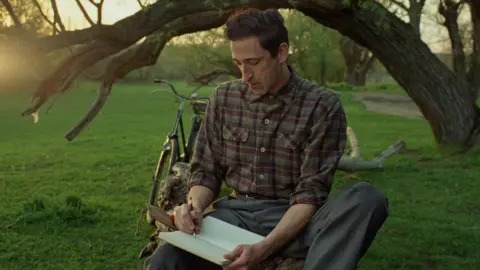 Lol Crawley/Universal Pictures
Lol Crawley/Universal PicturesOn Thursday, the film was nominated for 10 Oscars, including a best-actor nomination for Brody. Even before the Academy Awards shortlists were announced, Brody said how thankful he was for the reception the film had received from awards bodies.
“I’m just really grateful and I’m very appreciative of having had a chance to flourish in a work that I’ve dedicated a life towards. And when that is received with respect and appreciation. It’s very rewarding.”
The Brutalist is released in cinemas on 24 January
NewsBeat
Before Los Angeles disaster, wildfires pushed others out of California

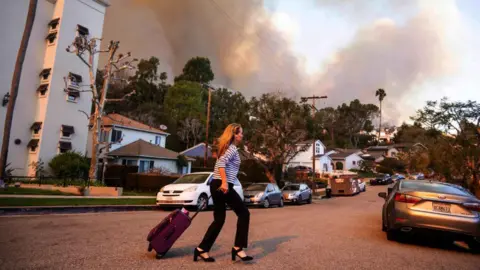 Getty Images
Getty ImagesChristina Welch still remembers what the sky looked like the day a wildfire came within 2 miles (3.2 km) of her Santa Rosa, California, home.
It was the Tubbs fire of 2017, the most destructive in California history at the time. Ms Welch’s neighbour woke her in the morning, and told her to grab her belongings and get out. When Ms Welch opened the door, ashes were falling from the sky and smoke filled the air.
Then, in 2019, the Kincade wildfire forced her parents to evacuate for five days.
It was the final push for Ms Welch. After advice from a friend, she packed her belongings and drove across the country to her new hometown: Duluth, Minnesota.
“It was just the culmination of all of it,” the 42-year-old said. “There’s only so many times that I was going to go through every fall of worrying about what is going to set on fire, if I was going to lose a house.”
Ms Welch is one of several people who has left California in recent years because of climate disasters, even before the most destructive wildfires in Los Angeles history killed 25 people this month.
Just this week, a new, fast-moving wildfire broke out in Los Angeles County, north-west of the city, forcing tens of thousands of people to evacuate a region already reeling from destruction. Trump plans to visit Southern California on Friday to witness the devastation from the blazes.
Climate experts say so far, they have not seen mass migration from the state because of climate change – and it’s difficult to estimate the number of people who have left for that reason. The state’s population growth rate, however, has continued to decline since 2000, according to the US census.
But scientists and demographic experts say that as climate change disasters become more extreme and unpredictable, the number of people leaving the state could rise, leaving some unprepared cities with the task of welcoming new residents.
“There could be this wave of new folks saying, ‘You know what? California is just not going to work out for me because this is the third time in five years that I’ve had to close my doors because of the extreme soot and smoke,’” said University of Michigan data science professor Derek Van Berkel.
“We have to start preparing for those eventualities, because they’re going to become more frequent and more extreme.”
Leaving California for ‘climate havens’
 Getty Images
Getty ImagesA number of climate-related factors may push Californians to leave home over the next decade. From 2020 to 2023, wildfires destroyed more than 15,000 structures in California, according to CalFire. At least 12,000 structures have been lost in the Los Angeles wildfires that broke out at the start of this year.
The state faces other climate change impacts as well, including flooding. Sea level rise could put half a million California residents in areas prone to flooding by 2100, according to the state attorney general’s office.
The state also deals with at least two earthquakes on average each year of magnitude 5.5 or greater, according to the California Department of Conservation.
As climate disasters have become more extreme and more frequent, home insurance rates in the state also have continued to rise. More than 100,000 California residents have lost their home insurance since 2019, according to a San Francisco Chronicle analysis.
Data suggests that climate migration is, so far, more of a local phenomenon, with some moving inland within their home state or even seeking higher ground in their own city to avoid flooding, said Jeremy Porter, head of climate implications with First Street, which conducts climate risk modeling.
But, he said, in recent years, a smaller number of people have begun to flock to cities outside of California that advertise themselves as potential “climate havens”.
The term comes from climate adaptation researcher Jesse Keenan, who created a list of places in 2019 that are expected to be less affected by climate change.
Near the top of the list is Duluth, Minnesota, a former industrial city, home to about 90,000 people, a population that has grown slowly since 2020 after years of stagnation.
One of the draws of the town is its proximity to the Great Lakes, the series of lakes that comprises the largest freshwater body in the world. Around 10% of the US and 30% of Canada relies on the lakes for drinking water.
“In a scenario where resources have become scarce, this is a tremendous asset,” Mr Van Berkel said.
The Great Lakes water supply lured Jamie Beck Alexander and her family to Duluth. Alarmed by three consecutive, destructive wildfire seasons in California, Ms Alexander, her husband and two young children piled into a camper van and drove across the country to Minnesota in 2020.
Ms Alexander has found similarities between the small, progressive city and their old city of San Francisco.
“There’s a real depth of connection between people, and deep rootedness, things that I think are important for climate resilience,” she said.
Ms Welch ignored her friends who thought she was crazy to move to a city known for its record-breaking snowfall and icy conditions, with an average 106 days a year of sub-freezing temperatures. The crisp, pretty city on a hill has become her own, she said.
“There’s a lot of people here who love where they live and want to protect it,” Ms Welch said of Duluth.
Preparing for climate migration
Though some cities have embraced their designation as climate havens, it remains a challenge for smaller local governments to find the resources to plan for new residents and climate resilience, said Mr Van Berkel.
Mr Van Berkel works with Duluth and other cities in the Great Lakes area on climate change planning, including welcoming new residents moving because of climate change.
The city of Duluth declined to respond to the BBC’s request for comment on how it was preparing to potentially welcome climate migrants.
For now, Mr Porter said, the Great Lakes region and other “climate haven” cities aren’t seeing high levels of migration. But if that changed, many would not be ready, he said.
“It would take a huge investment in the local communities… for those communities to be able to take on the kind of population that some of the climate migration literature indicates,” Mr Porter said.
In the city of Duluth, for instance, housing availability can be an issue, Ms Alexander said. She said that although the city has space to create new housing, it does not currently have enough new developments for a growing population. As a result, in the years since she moved there, she said, housing prices have risen.
And any new housing and other developments also need to be made with climate change in mind, Mr Van Berkel said.
“We don’t want to make missteps that could be very costly with our infrastructure when we have climate change rearing its ugly head,” he said.
Are ‘climate havens’ a myth?
In 2024, a Category 4 Hurricane destroyed over 2,000 homes and businesses in Kelsey Lahr’s climate haven of Asheville, North Carolina.
She moved there in 2020, drawn to the city’s warm climate, restaurant and music scene, after a series of devastating wildfire seasons and mudslides near her town of Santa Barbara, California.
Before moving, Ms Lahr researched extensively the most climate-resilient places to live, with Asheville ranking near the top because of its milder temperatures and inland location, shielding it from flooding.
But last year, Hurricane Helene ploughed through western North Carolina, killing over 100 people in the state and decimating Ms Lahr’s new hometown of Asheville. Many were left without power for nearly 20 days and without potable drinking water for over a month.
“Clearly southern Appalachia is not the ‘climate haven’ that it was built up to be,” Ms Lahr said.
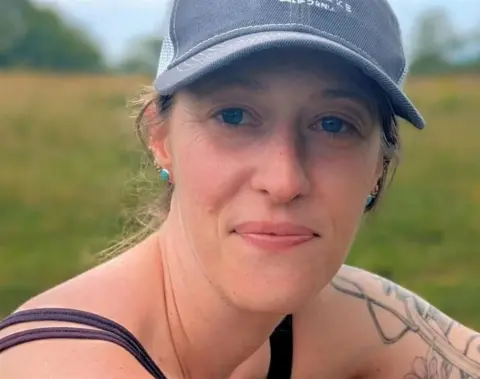 Kelsey Lahr
Kelsey LahrIn Deluth, Ms Alexander said her family also learned quickly that they could not run away from climate change.
During their first summer, the town was hit with the same smoke and poor air quality that drove them away from California – this time from Canadian wildfires.
“It was like, this really profound joke that the universe played on me,” she said. “Unless we address the root cause [of climate change], we’re always going to feel like we need to pick up and move.”
She has since moved to Wisconsin for personal reasons, but says she doesn’t regret that first trek to Minnesota. Neither does Ms Lahr regret moving to Asheville.
Though Ms Lahr often misses the ancient forests of Yosemite National Park in California, where she would spend her summers working as a park ranger, a future that may bring more climate disasters requires sacrifices, she said.
“I sort of increasingly think that climate havens are a myth,” she said. “Everybody has to assess the risk where they live and go from there.”
NewsBeat
Belarusian opposition denounces Lukashenko and Sunday’s election

BBC Eastern Europe correspondent
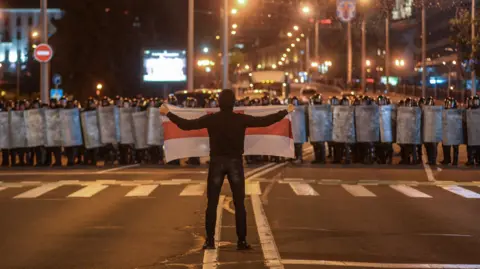 European Pressphoto Agency
European Pressphoto AgencySvetlana Tikhanovskaya refuses to call what’s happening this weekend in Belarus an election.
“It’s a sham,” the exiled opposition leader says. “This is a military-style operation; a performance staged by the regime to hold on to power.”
For three decades, the country has been led by an increasingly authoritarian Alexander Lukashenko, now firmly backed by Vladimir Putin who makes use of his neighbour in his full-scale invasion of Ukraine.
This Sunday, Belarusians will see Lukashenko’s name on the ballot paper once again, with four other names chosen carefully to be no challenge.
No independent observers are allowed.

The tight controls have bene put in place because last time Belarusians voted for a president, the country was swept by giant protests.
In 2020, Alexander Lukashenko allowed Svetlana Tikhanovskaya to run against him, thinking that a political novice – and a woman – would make no impact.
It was a massive miscalculation.
Tikhanovskaya, who decided to stand in place of her husband after Lukashenko put him in jail, claimed victory.
When Lukashenko was awarded 80% of the vote, crowds took to the streets in the biggest ever threat to Lukashenko’s rule. The protests were ultimately crushed by riot police with mass arrests and brute force.
The European Union then refused to recognise Lukashenko’s legitimacy as president.
Today, all the key opposition figures from the period are in prison or have fled abroad, like Tikhanovskaya. Former protesters still in Belarus have been scared into silence.
So the opposition leader is not urging them to take to the streets again on Sunday.
“We call on Belarusians to reject this sham and on the international community to reject the result,” she tells the BBC. “But I say to Belarusians, you have to keep safe until the real moment of possibility.
“Because people live in constant fear, and the regime is now intensifying the repression.”
 Handout
HandoutYou feel that fear straight away when you speak to Belarusians.
Many don’t want to talk publicly about politics at all. Others ask you to change their names, then choose their words carefully.
Some still inside Belarus chat only via encrypted messages which they delete immediately.
All say open political activism in the country has been extinguished.
Bysol, a non-profit organisation which helps evacuate those in danger, reports a surge in applications to around 30 or 40 requests a month.
Since 2020, the group has evacuated more than 1,500 people.
It also supports former political prisoners trying to rebuild life in exile after their release.
For Yana Zhuravleva, a vet, that’s been tough.
Prior to 2020 she was devoted to her work and not particularly politically active. But that summer she joined the giant crowds, hopeful of change.
She was later sentenced to three years for a “gross violation of public order”.
“We would get punished for everything,” she recalls of her time in prison.
She calculates that about 1 in 10 of the women were there because of the protests. Like them, Yana was added to the register of those “inclined to extremism and destructive activity”.
“You can’t go to the sports hall, your only letters are from relatives and you get fewer visiting rights. If you complain you always hear the same response: remember what you’re here for,” she tells me from Poland, where she moved after her recent release.
Yana admits it took “titanic” strength not to slide into deep depression.
“In prison, I barely cried. But when I was out, I suddenly wanted to sob all the time, and didn’t know why.”
 European Photopress Agency
European Photopress AgencySeveral people I contacted have mentioned seeking psychological help, after being interrogated, threatened or imprisoned.
They describe a security service that hunts down anyone with the loosest link to the opposition, then demands names from all those it detains.
The pressure has never let up.
One woman inside Belarus, who used to monitor human rights, tells me she’s had to stop attending court hearings because the authorities spotted her.
If they could prove any link to the banned human rights organisation Viasna, she could be charged as an “extremist”.
“I can do some specific acts of support, but I have to be careful,” she told me anonymously.
“You have a very strong sense of helplessness when you see all this injustice.”
Viasna currently lists 1,256 political prisoners in Belarus. Dozens were given amnesties recently, but they were soon replaced.
For those who do escape the pressure-cooker of Belarus, there is the added struggle of knowing they may not return for a long time.
That’s why Natalia, not her real name, decided to stay in Belarus even after she was detained twice for participating in the protests.
“You’re very vulnerable once you’re on the list of the ‘repressed’,” she explains.
“You can’t get work because you are on the police data base and the authorities always have an eye on you…”
For Natalia that meant being arrested again, initially for walking her dog without a lead.
“They claimed I’d been aggressive and cursed loudly and waved my arms,” she remembers, of her detention in 2023. She was held for ten days with up to 14 people in a cell for two, a light on constantly.
For over a week, she slept on the wooden floor.
“It really shook my sense of security, I became much more anxious,” Natalia confides.
She’s abroad for now and plans to return soon, to her cats. But her neighbours say a police officer just visited her house, checking up on all potential protesters ahead of Sunday’s vote.
 Reuters
ReutersSvetlana Tikhanovskaya believes the ongoing repression shows that Lukashenko and his allies are afraid.
“The trauma of 2020 is still alive and he has to eliminate any possibility of uprising,” the opposition leader argues.
“He knows the Belarusians didn’t accept or forgive him, and they still want change.”
But she admits there’s little sign of that in the short-term.
For a time after Russia’s full-scale invasion of Ukraine, Belarusians hoped their neighbours might succeed in defeating Putin with Western help, and that Lukashenko would follow him.
Some headed for the front line themselves, choosing force after their peaceful protests had failed.
But Ukraine’s military is now struggling to hold ground and President Donald Trump is pushing for peace talks.
“The democratic world can’t make concessions to Putin,” Tikhanovskaya argues, describing Lukashenko as equally dangerous to the world.
He let Russia launch missiles at Ukraine from Belarus and send its tanks through his territory.
He’s also allowed the free flow of migrants to the Polish border and into the EU.
“He allows Putin to deploy nuclear weapons and his army in Belarus, and it’s a very short path to Poland and Lithuania,” Tikhanovskaya points out.
“He and Putin are a pair, and they support other dictators. He’s part of this chain of evil.”
There is little doubt that Sunday’s reinstatement of Alexander Lukashenko will go according to his plan.
“Those people are very capable,” explains Yana, the former political prisoner.
“They really did crush the potential for protest.”
She’s now trying to return to her profession as a vet, but in Poland, and to recover from three tough years behind bars.
Those I spoke to now see Lukashenko retiring, or eventually dying, as their greatest hope of seeing democracy.
In the meantime, many are switching focus: there’s been a surge of interest in reviving the Belarusian culture and language, an opposition cause. It’s the most many dare do in such circumstances.
“No-one says it openly, but we feel like there are no prospects. There’s depression,” Natalia admits.
But there are no obvious regrets, even so.
Svetlana Tikhanovskaya’s own life has changed dramatically since she was thrust into politics.
Cut-off from her country, her husband is also a political prisoner – kept in total isolation for almost two years.
The opposition leader insists she still “truly believes” in change.
“2020 was a huge shift in mentality in Belarus. I don’t know how long it will take, but that shift will not disappear.”
NewsBeat
Could calling attacks like Southport terrorism help prevent them?

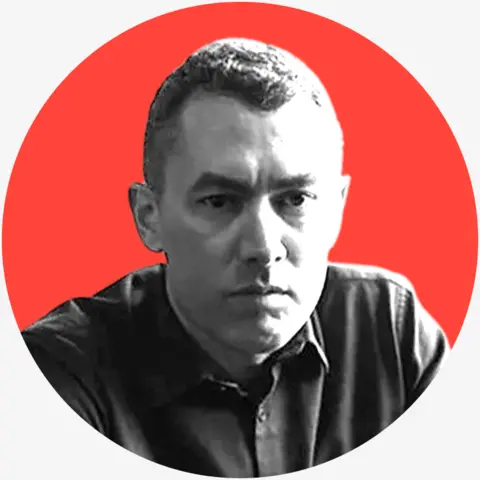
Investigations Correspondent
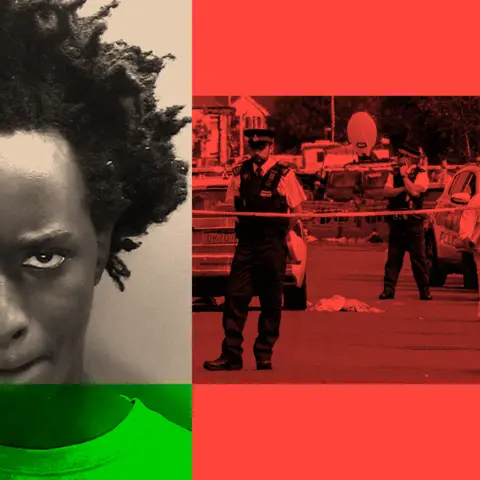 PA Media
PA MediaThe teenager who murdered three children, Elsie Dot Stancombe, Alice da Silva Aguiar, and Bebe King, at a Taylor Swift-themed dance class last July will serve a minimum of 52 years in prison.
Axel Rudakubana had a long-standing obsession with violence, killing and genocide, but prosecutors said there is no evidence he ascribed to any particular political or religious ideology.
He admitted a terrorism offence for downloading an al-Qaeda training manual. But the knife attack has not been treated as terrorism by police or prosecutors, and the judge stressed that he “must accept” that there was no evidence of terrorist cause.
He added, however, that Rudakubana’s culpability is “equivalent to terrorist matters, whatever its purpose”.
Following Rudakubana’s guilty pleas earlier this week, Prime Minister Sir Keir Starmer declared “terrorism has changed” and Britain is facing a “new threat”.
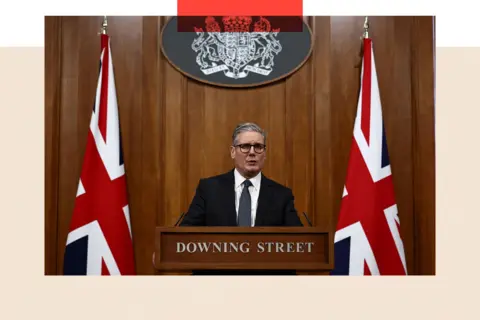 PA Media
PA MediaIn the past, he said, the main threat was organised groups like al-Qaeda, but that we now also face extreme violence from “loners, misfits, young men in their bedroom, accessing all manner of material online, desperate for notoriety”. They are sometimes inspired by traditional terrorist groups, he said, but are fixated on extreme violence, seemingly for its own sake.
But what the prime minister described has been happening for years.
“This is not a new threat,” says Barnaby Jameson KC, who has spent years prosecuting terror cases. “In the last decade we have seen a plethora of terrorist cases involving young males who have become self-radicalised in isolation online.”
What is new is that the prime minister has now indicated this problem must be urgently addressed.
The question now is how he will do it – and, if this has been going on for so many years, why has it taken until now to do so?
A ‘fluid’ counter-terror system
At present, the police, courts and MI5 work to a definition in the Terrorism Act 2000.
That defines terrorism as the use or threat of violence designed to influence the government, an international governmental organisation, or to intimidate the public or a section of it, with the use or threat of violence for the purpose of advancing a political, religious, racial or ideological cause.
Put simply, for an attack to be treated as terrorism the authorities must conclude it was for some kind of cause.
But various terror offences can be – and are – used to charge and disrupt people who are not defined by prosecutors as having a terrorist motive. On the flipside, it is also true that cases which some think should be classed as terrorism, are not.
 Children in Need / PA
Children in Need / PASeveral recent cases show how fluid the counter-terror system can be when presented with cases falling outside the main ideologies, showing these issues are not as new as the prime minister suggests.
Counter-terror police, with their particular focus on preventing violence in the first place, have investigated plots that are not defined as terrorism, including two teenagers jailed in 2018 for planning a school massacre in North Yorkshire.
Another investigation prevented a massacre in Cumbria the same year. The “loner” responsible was convicted of possessing terrorist manuals, but prosecutors said the motive was “not terrorism” and related to hatred and revenge.
 North East Counter Terrorism Unit
North East Counter Terrorism UnitIn 2021, a 16-year-old boy from Birmingham admitted three terror offences for possessing gun and bomb manuals. He had a general fascination with terrorism, violence and so-called ‘incels’.
From age 11, he had constantly posted in a forum about the Columbine massacre. The prosecution case was that he did not hold any fixed ideology.
On the other side of the spectrum, a vehicle attack in Westminster in 2018 – in which a man drove at cyclists and police officers outside Parliament – was prosecuted and sentenced as terrorist-linked, despite no evidence of any extremist motive, on the basis that the act and location meant the attacker must have been acting for a terrorist purpose.
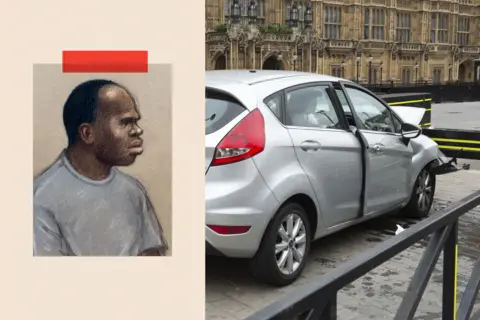 BBC/ Metropolitan Police
BBC/ Metropolitan PoliceThe case shows a motive does not need to be clear for a case to be treated as terrorism.
But a notorious double murder that was inspired by an extreme ideology – the stabbings of Bibaa Henry and Nicole Smallman in a London park in 2020 – were not defined as terrorism despite the killer clearly being motivated by his adherence to Satanism and the occult.
The case of the Liverpool hospital explosion
It is up to the police, namely the senior national co-ordinator for counterterrorism, to declare an incident as terrorism.
In the past, this has happened quickly in notorious cases, including after the Manchester Arena bombing and the Westminster Bridge attack. Both were carried out by known extremists.
One reason why police may now take longer before making a declaration – even an incident that may appear likely to be classed as terrorism – is because of an explosion in a taxi outside Liverpool Women’s Hospital in 2021, which was initially declared a terrorist incident.
After a long investigation, however, detectives eventually concluded there was no evidence the Liverpool bomber held extremist views of any kind and that his precise motive remained unknown, but it was likely driven by anger towards the British state for repeated rejections of his asylum claim and exacerbated by his own mental health struggles.
Despite such examples, the central focus for MI5 and police is terrorism as defined by the law, rather than a broader group of people presenting a more general risk of violence.
If the government is now going to ask that more time be devoted to this wider group, MI5 and the police may well ask for more resources.
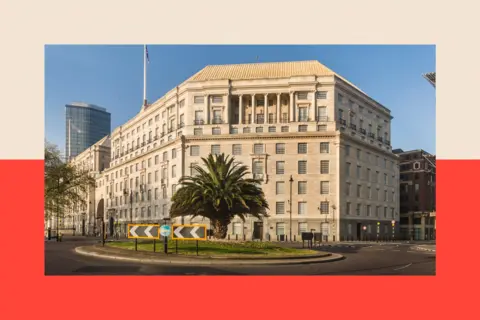 Getty Images
Getty ImagesAs things stand, both are currently devoting increasing time to investigating state espionage in the UK, particularly from Russia, Iran and China, which means they’re spending less time on terrorism investigations.
Within those investigations, detectives focused on the extreme right spend an increasing amount of time dealing with young people who engage in a range of harmful activity, including sexual offences.
Certain online spaces have seen a blending with the occult, Satanism, misogyny, and a general ultra-violent misanthropy, creating toxic new groups that bleed back into the real worlds.
Some of those involved are often mentally vulnerable, creating additional sensitivities around interventions, whether they involve criminal investigations or not.
Some neo-Nazi groups created by teenagers and young people online have been outlawed as terrorist organisations, joining a list that includes Hamas and the IRA.
From al-Qaeda to IS
The challenge of preventing lone attackers in the UK is nothing new. In the 1990s and early 2000s, the main threat was from elaborate plots directed by groups like al-Qaeda, such as the plan to blow up transatlantic planes using bombs disguised as drinks.
This era saw the creation of the main terrorism laws now in use, which defined a series of offences – including preparing acts of terrorism and possessing terrorist instructions – that we see in the courts, used to disrupt and stop people before they commit acts of violence.
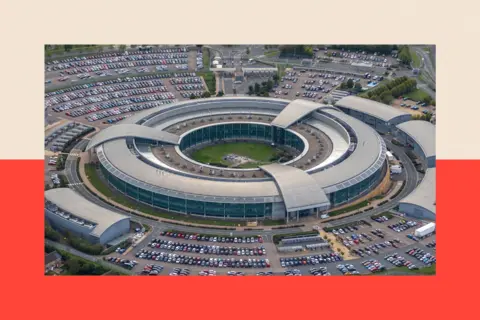 Getty Images
Getty ImagesBut with the emergence of the Islamic State (IS) group over a decade ago, the threat moved away from plots directed by organisations and towards acts of violence by individuals inspired by online propaganda and instructions from groups like IS, but who might have no direct contact with them.
In the decade since there have been multiple plots and attacks by lone actors, including people using knives and vehicles as weapons, making it harder to spot their plans because the preparations are relatively low-key.
Extreme right-wing violence, which has emerged as a major issue, has predominantly followed the same pattern: plots and attacks by lone actors, often very young, who are typically inspired by material accessed online.
The challenge of rooting outing lone attackers
For years, counter-terror police have been registering their concerns about this group. (Indeed, they are only a group because the authorities have defined them as such.)
The point is illustrated by the number of them referred to Prevent, the government-led counter-extremism programme. In the year to March 2020, 51% were for individuals with a “mixed, unstable or unclear ideology”, of which almost half had no concern identified following an initial assessment.
In the years since, the way in which that group is classed has changed, with newer categories for concerns about school massacre radicalisation and the misogynistic incel ideology, which makes direct comparisons over the years difficult.
However, the government’s own figures for 2023/2024 show the largest single group referred to Prevent – 36%, meaning 2,489 people – were defined as individuals with a vulnerability present but no ideology or counter terror risk, with 19% classed as extreme right-wing, 13% as Islamist radicalisation, and 2% relating to concerns regarding school massacres.
From these thousands of Prevent referrals, 7% were adopted as cases requiring intervention by a multi-agency panel. But the figures for interventions show how the largest group of original referrals – the mix of people with a general interest in violence but no clear ideology – get increasingly filtered out of the programme.
For cases involving intervention, 45% related to extreme right-wing radicalisation, 23% to Islamist radicalisation, 18% to individuals with “conflicted concerns”, and 4% for school massacre concerns.
The Southport attacker himself was referred to Prevent three times by “education providers” because of concern about his interest in violence and extremism, but each time officers assessed he did not need meet the threshold for intervention – assessments since found to be wrong by an official review.
A ‘dizzying range’ of beliefs
When you get to actual investigations by MI5, which is the UK’s lead agency for counter terrorism, the figures change again, with the organisation’s director general Ken McCallum saying last year that 75% relate to Islamist extremism and 25% to the extreme right.
However, he acknowledged that “straightforward labels like ‘Islamist terrorism’ or ‘extreme right wing’ don’t fully reflect the dizzying range of beliefs and ideologies we see,” and that MI5 is encountering more people accessing “both extreme right wing and Islamist extremist instructional material, along with other bits of online hatred, conspiracy theories and disinformation.”
 PA Media
PA MediaWhat the figures show is that a large group of people – about whom there are real concerns – neither end up in Prevent, nor being investigated by MI5 or counter-terror police.
The prime minister said this week it may be that such people are “harder to spot,” adding that we “can’t shrug our shoulders and accept that”.
But what his government is proposing to do about it is currently unclear.
New definitions: Would serial killers be included?
The government could consider broadening the definition of terrorism or creating new offences to tackle the threat of violence from non-terror offenders.
It could also change the way in which the threat of violence from non-terror suspects is monitored and managed.
Neil Basu, the Met’s former head of counter-terror policing, this week said that a “Prevent for non-terrorists” is now necessary and will require a “big bill” if we want to be safe.
The government has appointed Lord Anderson KC, a former independent reviewer of terrorism legislation, to review the Prevent scheme, although it was the subject of a highly critical review two years ago commissioned by the previous government.
Jonathan Hall KC, the current independent reviewer of terrorism legislation, has been asked by the government to consider whether the definition does need to change. Speaking to the BBC, he says: “There appear to be three reasons for expanding the definition of terrorism.
 PA Media
PA Media“The sense that only terrorism captures the horrors of attacks like the one by Rudakubana; because doing so brings in counter-terrorism powers; and because terror laws focus on pre-cursor offences and preventing attacks in the first place.
“However, to change the definition you would need to work out what violence to include, and what to exclude.
“If it was no longer necessary to prove a political, religious, racial or ideological cause, would the touchstone be methodology, or number of victims, or desire for notoriety or terrorising impact? Would serial killers like Lucy Letby be included or not?”
On the question of which resources are used to tackle the threat, he argues that “we must ask who is responsible for the risk posed by people like Rudakubana. This is about risk management and public protection by law enforcement, not welfare interventions.
“We can learn from how terrorist subjects of interest are managed by every mechanism available, such as non-terrorism prosecutions or use of civil orders.”
Now the Southport attacker has been sentenced, the focus will be on what the government next does to tackle the issues articulated by the prime minister.
Top picture credit: Merseyside Police and PA
BBC InDepth is the new home on the website and app for the best analysis and expertise from our top journalists. Under a distinctive new brand, we’ll bring you fresh perspectives that challenge assumptions, and deep reporting on the biggest issues to help you make sense of a complex world. And we’ll be showcasing thought-provoking content from across BBC Sounds and iPlayer too. We’re starting small but thinking big, and we want to know what you think – you can send us your feedback by clicking on the button below.
NewsBeat
Majority of Brits support cutting or abolishing inheritance tax, new poll shows, as farming backlash grows

The British public are in favour of cutting or abolishing inheritance tax, a new poll has shown, as backlash over the government’s tax raid on family farms continues to grow.
Campaigners have said the survey should be a “reality check” for the government amid growing frustration over the decision to extend inheritance tax to agricultural properties.
The latest polling, conduced by Public First for the Taxpayers’ Alliance – a pressure group campaigning for a low-tax society – saw 55 per cent of people say they would support cutting or abolishing the tax, with almost half of respondents listing the tax as the most unfair out of a list of nine.
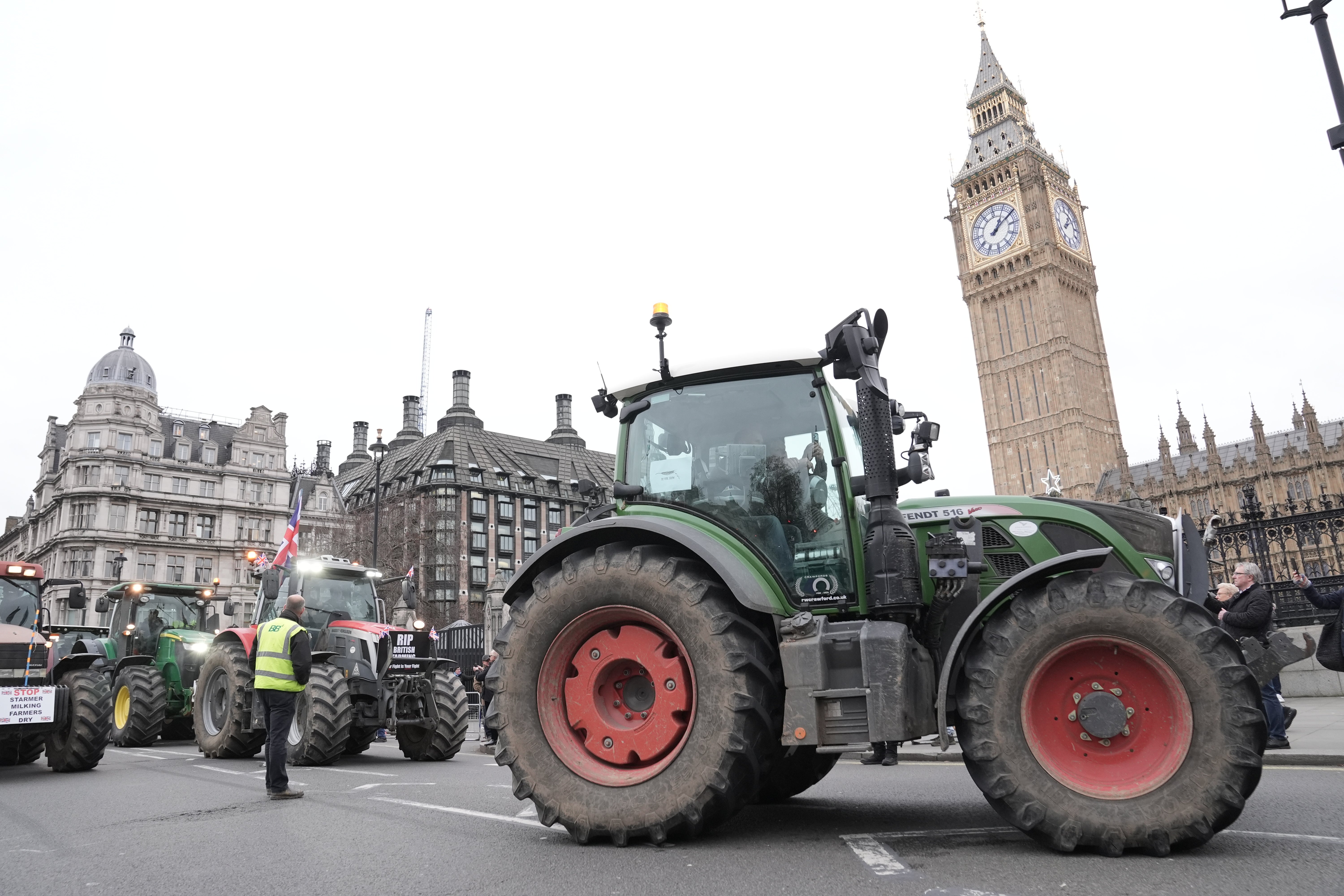
Asked “do you think the government should raise inheritance tax rates, cut inheritance tax rates, keep inheritance tax rates the same, or abolish inheritance tax all together?”, 27 per cent said it should be cut and 28 per cent said it should be abolished.
This compares to 21 per cent who say it should be kept the same and 10 per cent who said it should be increased.
Worryingly for Sir Keir Starmer, the figures were similar for 2024 Labour voters, with 48 per cent calling for the tax to be cut or abolished. Some 39 per cent think it should be kept or raised.
Looking at the question of family farms specifically, 56 per cent of 2024 Labour voters said inheritance tax should not be charged, compared with just 31 per cent who said it should.
John O’Connell, chief executive of the TaxPayers’ Alliance, urged the government to “listen to the electorate that put them in office and scrap inheritance tax”.
“The British public clearly recognise that inheritance tax is an almost uniquely bad tax, given their unanimous support for cutting or abolishing it altogether”, he said.
“While there are certain reforms – such as lifting thresholds – that could ease some of the pain, it’s becoming increasingly clear that the only acceptable solution in the long term is complete abolition.
“Our political leaders now need to listen to the electorate that put them in office and scrap inheritance tax once and for all.”
Meanwhile, Mo Metcalf-Fisher, director of external affairs at the Countryside Alliance said the “damning new polling should serve as a reality check for Keir Starmer and Rachel Reeves who continue to be in denial about the impact this unnecessary and divisive tax hike will have on our family farms”.
“Labour MPs, particularly in rural areas, need to demand a policy rethink now. It would be naïve for them to think this issue and the anger and hurt it has caused will go away”, he said.
On Monday, some of the UK’s largest retailers backed farmers in their fight against Ms Reeves’ inheritance tax raid, warning the “UK’s future food security is at stake”.
The calls have added to pressure on the chancellor to U-turn on her tax raid, which critics warn could sound the death knell for family farms in England.
But Treasury minister James Murray told MPs on Thursday that ministers would not give in to calls to pause and look again. He said the government was “committed to delivering the reforms announced at the Budget”, adding that it was a “fair approach” that would help to fix “the public services we all rely on”.
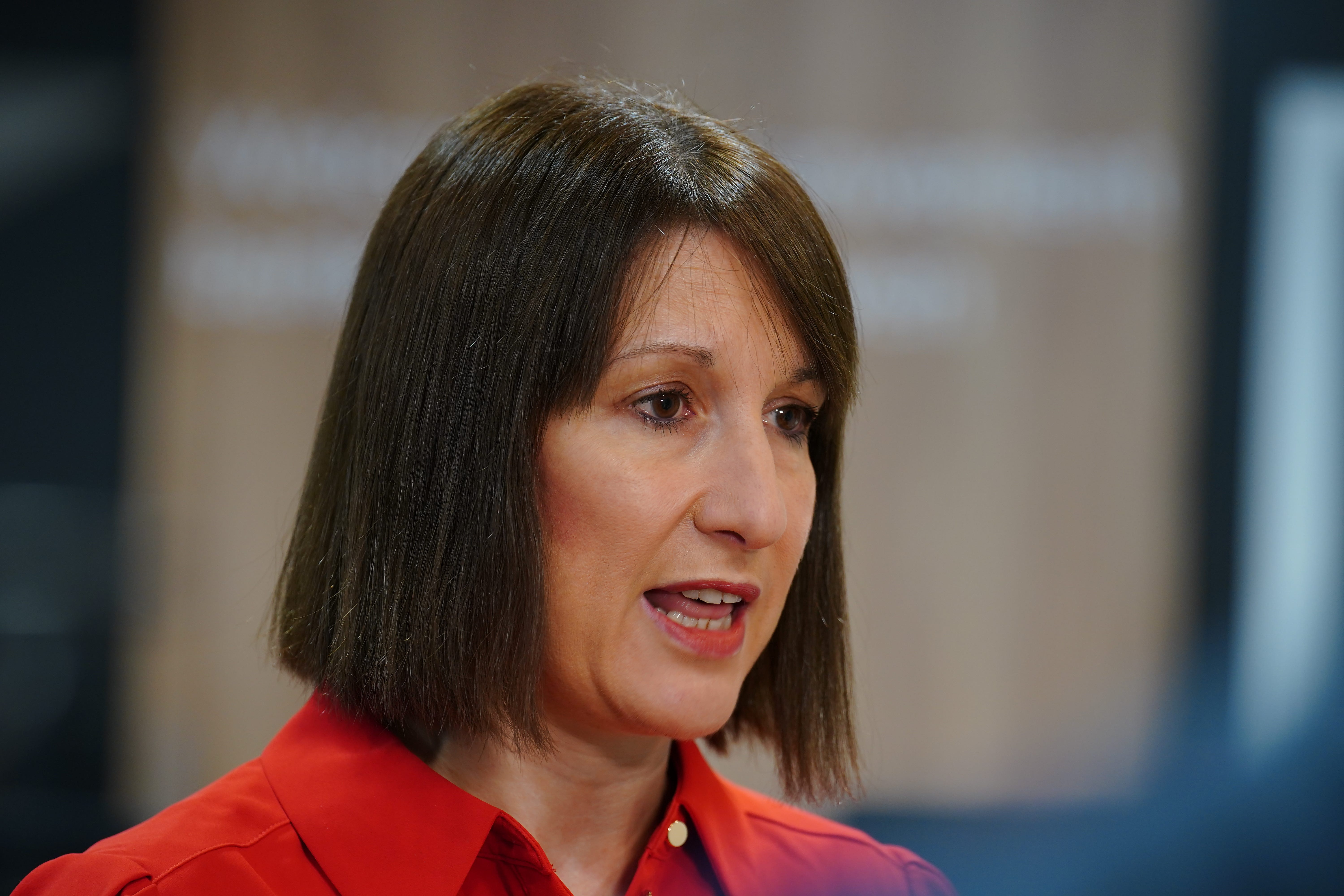
In a separate blow, a new report by the Office for Budget Responsibility (OBR) warned the policy may raise less than the Treasury hopes, with the £500m-a year-revenue forecast given a high uncertainty rating and likely to fall after seven years as families use tax planning to avoid the charge.
The changes mean that farms valued at £1m or more would be liable for 20 per cent inheritance tax.
The Treasury says that, with tax allowances, in reality, only farms worth £3m would be affected, just 28 per cent of family farms. But official Defra figures appear to suggest as many as 66 per cent could be hit.
The polling, which was conducted between December 13 and 17 2024, spoke to 2,011 UK adults.
NewsBeat
Captain Cook statue vandalised in Sydney ahead of Australia Day

Australian police are investigating after a statue of Captain James Cook was covered in red paint and disfigured, ahead of the Australia Day weekend.
It is the second time in 12 months that the statue in Sydney has been vandalised.
Australia Day is a national holiday that is held each year on 26 January – the anniversary of Britain’s First Fleet landing at Sydney Cove in 1788. Many Indigenous Australians say the date causes them pain.
The local council in Randwick – the suburb where the statue is located – described the vandalism as “a disservice to the community and a disservice to reconciliation”.
Councillor Carolyn Martin told Sydney radio station 2GB that the vandals had knocked off one hand and parts of the face and nose.
The statue – which was first unveiled in 1874 – was previously targeted in February last year, when it was covered with red paint and had parts of its sandstone damaged. Works to repair and restore it were completed a month later.
There are several Captain Cook statues across Australia, and others have also been vandalised on or around 26 January.
In 2024, one in Melbourne was cut down on the eve of the holiday, while its plinth was spray-painted with the words “the colony will fall”. Two years earlier the same statue had been splashed with red paint, while in 2018 it was graffitied with the words “no pride” and had an Aboriginal flag placed next to it.
-

 Fashion8 years ago
Fashion8 years agoThese ’90s fashion trends are making a comeback in 2025
-

 Entertainment8 years ago
Entertainment8 years agoThe Season 9 ‘ Game of Thrones’ is here.
-

 Fashion8 years ago
Fashion8 years ago9 spring/summer 2025 fashion trends to know for next season
-

 Entertainment8 years ago
Entertainment8 years agoThe old and New Edition cast comes together to perform You’re Not My Kind of Girl.
-

 Sports8 years ago
Sports8 years agoEthical Hacker: “I’ll Show You Why Google Has Just Shut Down Their Quantum Chip”
-
Business8 years ago
Uber and Lyft are finally available in all of New York State
-
Entertainment8 years ago
Disney’s live-action Aladdin finally finds its stars
-
Sports8 years ago
Steph Curry finally got the contract he deserves from the Warriors
-
Entertainment8 years ago
Mod turns ‘Counter-Strike’ into a ‘Tekken’ clone with fighting chickens
-
Fashion8 years ago
Your comprehensive guide to this fall’s biggest trends








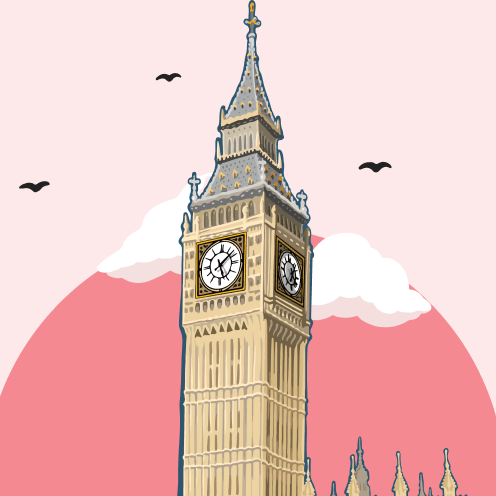



You must be logged in to post a comment Login